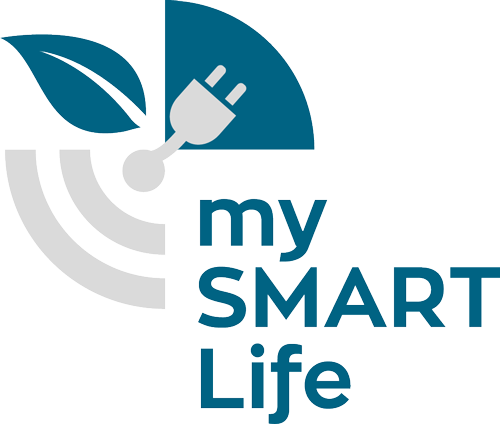On 14th June 2021, Helsinki’s City Board approved the Sustainable Energy and Climate Action Plan, SECAP. Based on the calculations in the plan, it seems that mySMARTLife Lighthouse City Helsinki clearly exceeds the global minimum requirements for sustainable energy use and climate work.
The SECAP plan confirms previous studies that it is possible for Helsinki to achieve the carbon neutrality target by 2035 at the latest - and not just meet but even exceed expectations at global level.
What is SECAP?
SECAP stands for Sustainable Energy and Climate Action Plan. Cities have an important role to play in putting climate goals into practice. That is why Helsinki is involved in the Global Covenant of Mayors for Climate and Energy (GCoM). It is the world's largest urban climate commitment, which requires a Sustainable Energy and Climate Action Plan (SECAP) to be drawn up in accordance with precise eligibility requirements.
The SECAP Action Plan predicts success
With the Helsinki City Strategy 2017–2021, the city committed itself to achieve carbon neutrality by 2035, and to reduce emissions by at least 80 % until 2035 and by at least 60 % until 2030. A scheduled action plan, the Carbon Neutral Helsinki 2035 Action Plan (HNH programme), was prepared for the implementation of emission reductions. The guidelines approved in 2019 were drawn up for adaptation to climate change. These serve as the starting point for the SECAP Action Plan.
The emission reduction impacts of the measures identified in the HNH programme have been assessed in the SECAP Action Plan in ten sets of measures corresponding to the SECAP reporting framework. According to the review, the most significant measures affecting emissions in the HNH programme have been selected.
The SECAP Action Plan presents the estimated baseline trajectory of Helsinki's emissions, i.e. BAU (Business as Usual), in which the city's emissions development is guided only by national measures and guidelines. The target path has taken into account the key mitigation measures identified in the HNH programme.
If the baseline emission trend materialises, Helsinki's greenhouse gas emissions would decrease by approximately 27 % until 2030 compared to 1990 levels. With the development of emissions in accordance with the HNH programme and mySMARTLife project partner Helen Ltd.'s current investment programme, as well as the target scenario that takes into account the Carbon Neutral Helen 2035 target, total emissions would decrease by 81 % from the 1990 levels by 2030. Per capita emissions would decrease from 9 tonnes to 1.1 tonnes between 1990 and 2030 in the target scenario.
According to the Covenant commitment, emissions in cities should fall by at least 40 % from the base year level until 2030, so with the development in line with the target, Helsinki will clearly exceed the minimum target and take a giant leap in its emission reductions.
“According to a recent calculation, it seems that our carbon neutrality target is realistic. We do excellent climate work and are one of the best climate actors in Europe and in the world”, says Environmental Planning Officer Petteri Huuska from the City of Helsinki's Urban Environment Division.
Helsinki has been promoted to the A-class of the leading cities engaged in climate work
This is reflected in the 2020 listing of the Carbon Disclosure Project (CDP), a collector of climate change data and reporting. In it, Helsinki received excellent marks for both climate change mitigation and adaptation.
What actions are taken in order to achieve the top result?
Emission reduction work is carried out in accordance with the Carbon Neutral Helsinki 2035 action plan. The biggest emission reduction actions in the city of Helsinki:
- Energy production plays an important role in reducing emissions. The city-owned energy company Helen will stop using coal in energy production during the 2020’s. The aim is to reduce emissions from energy production to a fraction of the previous level by utilising renewable energy and waste heat on an industrial scale.
- The Helsinki Energy Challenge, organised by the City of Helsinki, has sought new ways to modernise energy production with minimal use of bioenergy, as biomass is a controversial fuel in widespread use. The most promising solutions collected from the competition are to be studied and implemented.
- By electrifying traffic: Within a few years, all Helsinki’s buses and the construction machines will operate on waste-derived biofuels or electricity.
- Improving the energy efficiency of residential and real estate properties and developing better ways to use renewable energy: A significant step is the Energy Renaissance operating model which was launched this year. It provides private housing companies with concrete guidance on energy efficiency improvements and their own renewable energy production.
Implementation will be closely monitored
The SECAP plan has been approved and its refinement and implementation are monitored annually by the City Board. It also serves as a monitoring channel for the Carbon Neutral Helsinki 2035 programme and the guidelines for adaptation to climate change. The implementation and refinement of the plan will also be reported every two years to the Global Covenant of Mayors European Monitoring System.
“Climate work is in progress and the forecasts look very good. We will continue developing the carbon neutrality programme, improve its effectiveness and monitor the implementation of measures. The progress of the Carbon Neutral Helsinki Operational Programme can be followed from the Climate Watch service ilmastovahti.hel.fi”, Team Leader Johanna af Hällström from the City of Helsinki's Urban Environment Division summarises the city's climate work.


